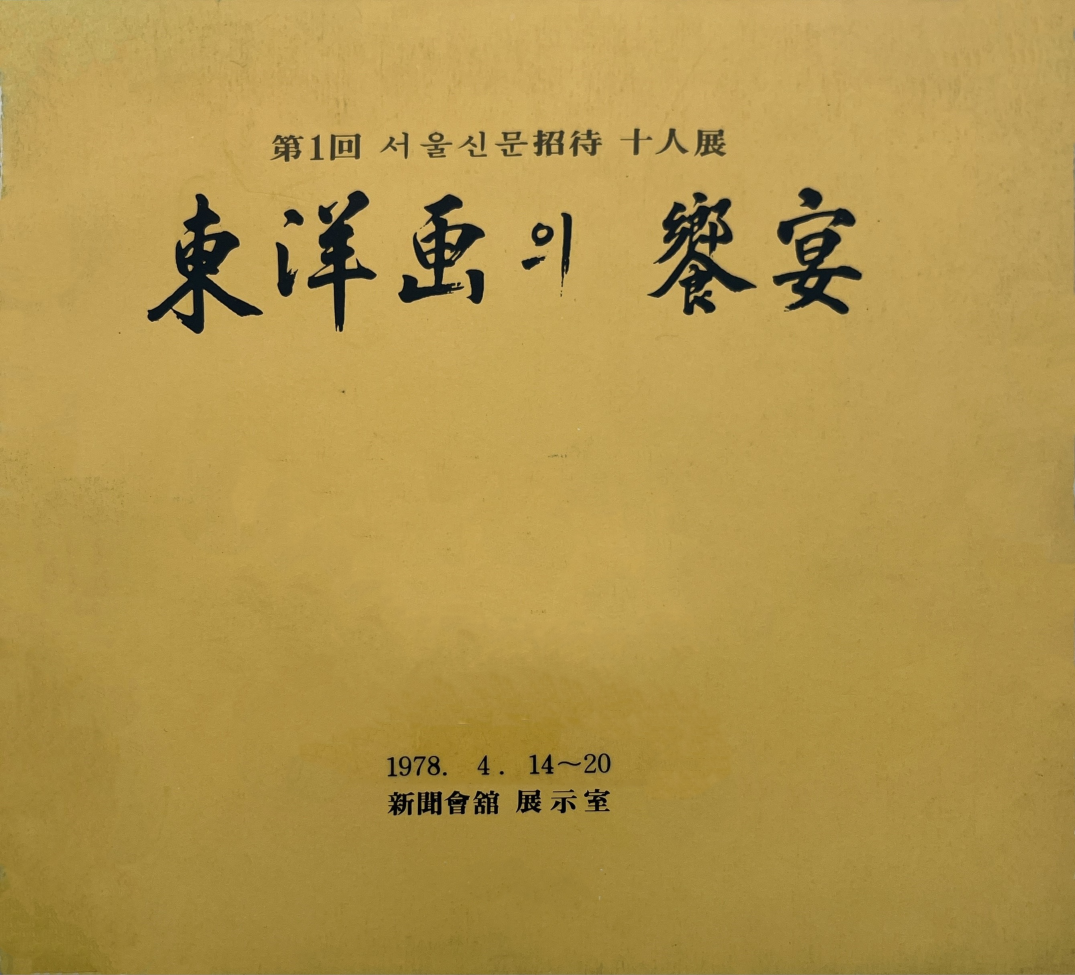
Exhibition of Ten Eastern Painters, Catalogue, 1978, MMCA Digital Library
Exhibition of Ten Eastern Painters
* Source: MMCA
Related
-
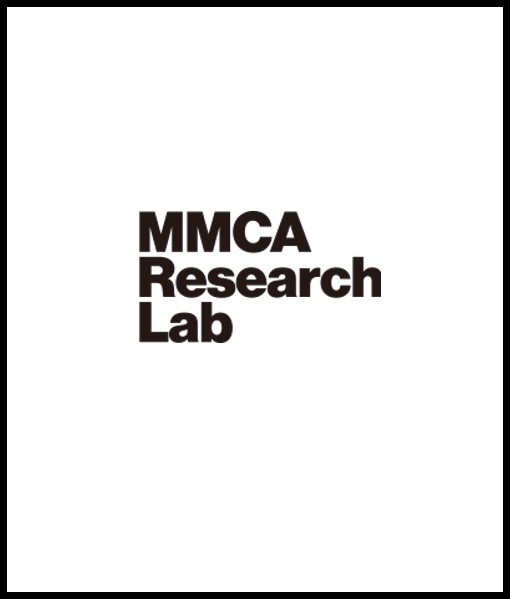
Lee Gu-yeol
Lee Gu-yeol(1932-2020) was the first art journalist, an art critic, and a researcher of modern art in Korea. Born in Yeonbaek, Hwanghae-do Province, Lee went to South Korea during the Korean War. He enlisted in the army as a cadet, completed infantry and artillery schools, and served as an officer during the war. After being discharged as a captain in 1958, he joined World Telecommunications and worked in the publications department. In 1959, he enrolled as a junior in the College of Fine Arts at Hongik University, but he could not finish his studies. He worked as an art reporter in the culture desk of Segye Ilbo newspaper (renamed the Minguk Ilbo in 1960) and then as a reporter and deputy head of the culture desk of Kyunghyang Shinmun newspaper in and after 1962. In 1970, he transferred to Seoul Sinmun newspaper and served as the head of its culture desk. He became the head of the culture desk of Daehan Ilbo newspaper in 1972 but ended his journalistic career when the company ceased to publish in 1975. In 1964, Lee was in charge of editing the quarterly magazine Misul (Art) (published by Munhwa Gyoyuk Chulpansa). He also organized the publication of fifteen volumes of the Complete Collection of Korean Art (sponsored by Donghwa Chulpan Gongsa) and worked as chief editor from 1973 through 1975. He served as president of the Korean Art Critics Association (1984–1985), a member of the Cultural Heritage Committee of the Ministry of Culture and Tourism (1992–1999), and as director of exhibition projects at the Seoul Arts Center (1993–1996). He also opened the Korean Modern Art Research Institute and published its irregular periodical Modern Art of Korea from the first to fifth issues (1975–1977). His books include The Realm of Painting: The Life and Art of Idang (1968), A Study on Modern Korean Art (1972), The Development of Modern Korean Art (1982), Research on Modern Korean Art History (1992), History of Modern Korean Painting (1993), 50 Years of North Korean Art (2001), The Story behind Modern Korean Art (2005), Rha Hyeseok: The Woman Who Drew Her Fiery Life (2011), Korean Cultural Heritage: A History of Suffering (2013), and My Days as an Art Reporter (2014). In 2018, he published two volumes of his self-edited literary collection Miscellany by Cheongyeo to celebrate his turning eighty-eight. Lee Gyu-yeol played a crucial role in the establishment of the Archives of Korean Art Journal, the first art archives in Korea, in December 1998 by donating his materials related to modern and contemporary art to the Samsung Museum of Art. In 2015, he donated more than 4,000 items to Gacheon Museum of the Gil Cultural Foundation. He passed away in 2020 at the age of eighty-nine.
-
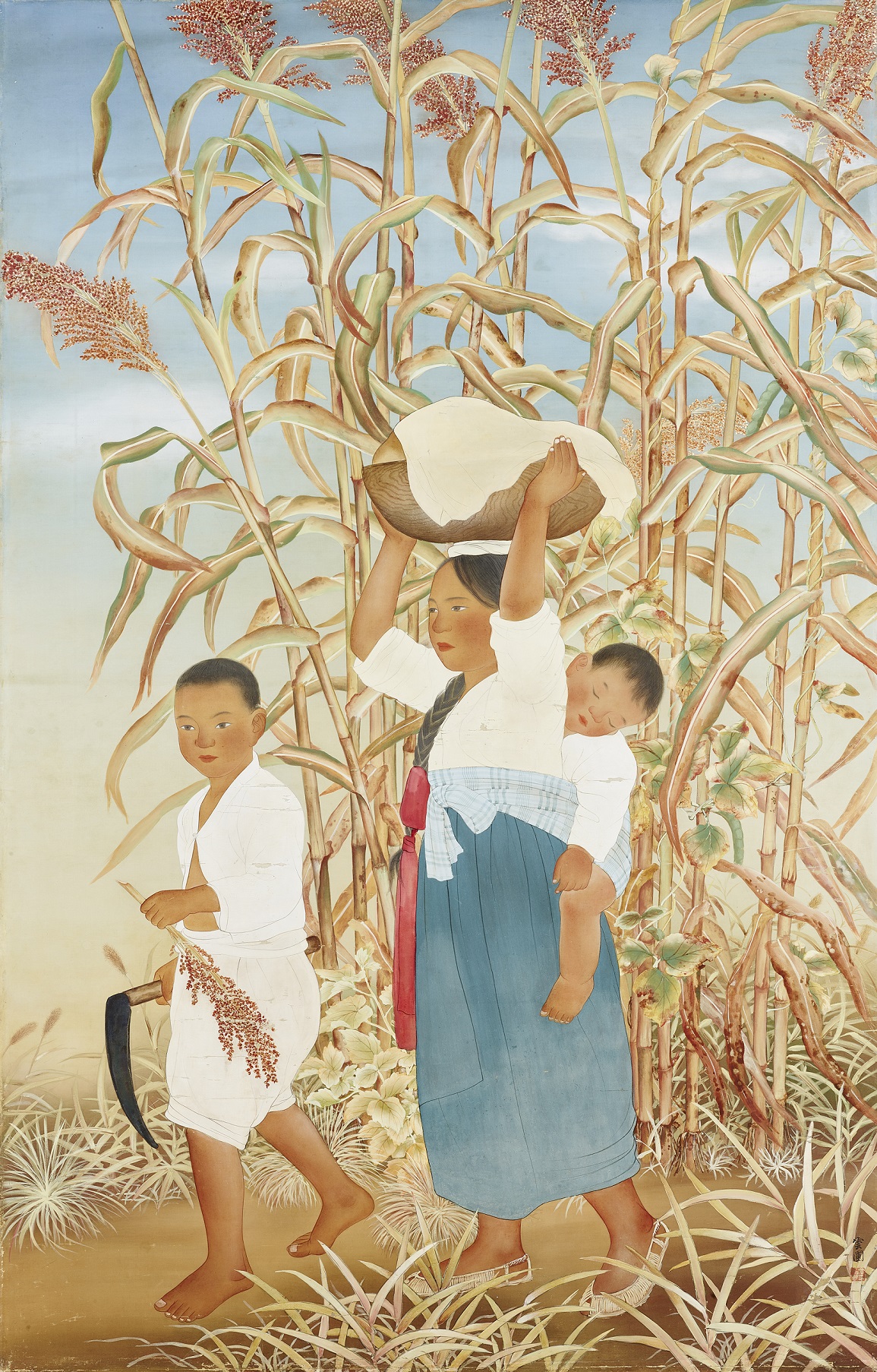
Kim Kichang
Kim Kichang (1913-2001, pen name Unpo or Unbo) studied Eastern painting at Kim Eunho’s art studio Nakcheongheon. After his debut in the tenth Joseon Art Exhibition [Joseon misul jeollamhoe] in 1931, he won special selections from 1937 to 1940, and became a renowned painter. He was appointed as the first president of Paek Yang Painting Association and became a professor at Hongik University and Soodo Women's Teachers College. He was awarded the Order of Civil Merit, Peony Medal in 1981 and the Korean Art Academy Award in 1983. After he passed away in 2001, he was awarded a posthumous Geumgwan Order of Culture Merit award. Although Kim initially focused on colorful figure paintings, following in the legacy of his mentor Kim Eunho, in his later career he collaborated with his wife Park Rehyun to modernize Korean painting by adopting cubism and abstraction. He reinterpreted traditional folk paintings in his representative works, such as Blue-green Landscape Painting series started in the 1970s and his Fool’s Landscape Painting in the 1980s and was inspired by portraits of historical figures. He contributed to the development of Korean modern art by working in an expanded formal territory from figuration to abstraction and addressing subject matter from folk painting, to figure and landscape painting.
-
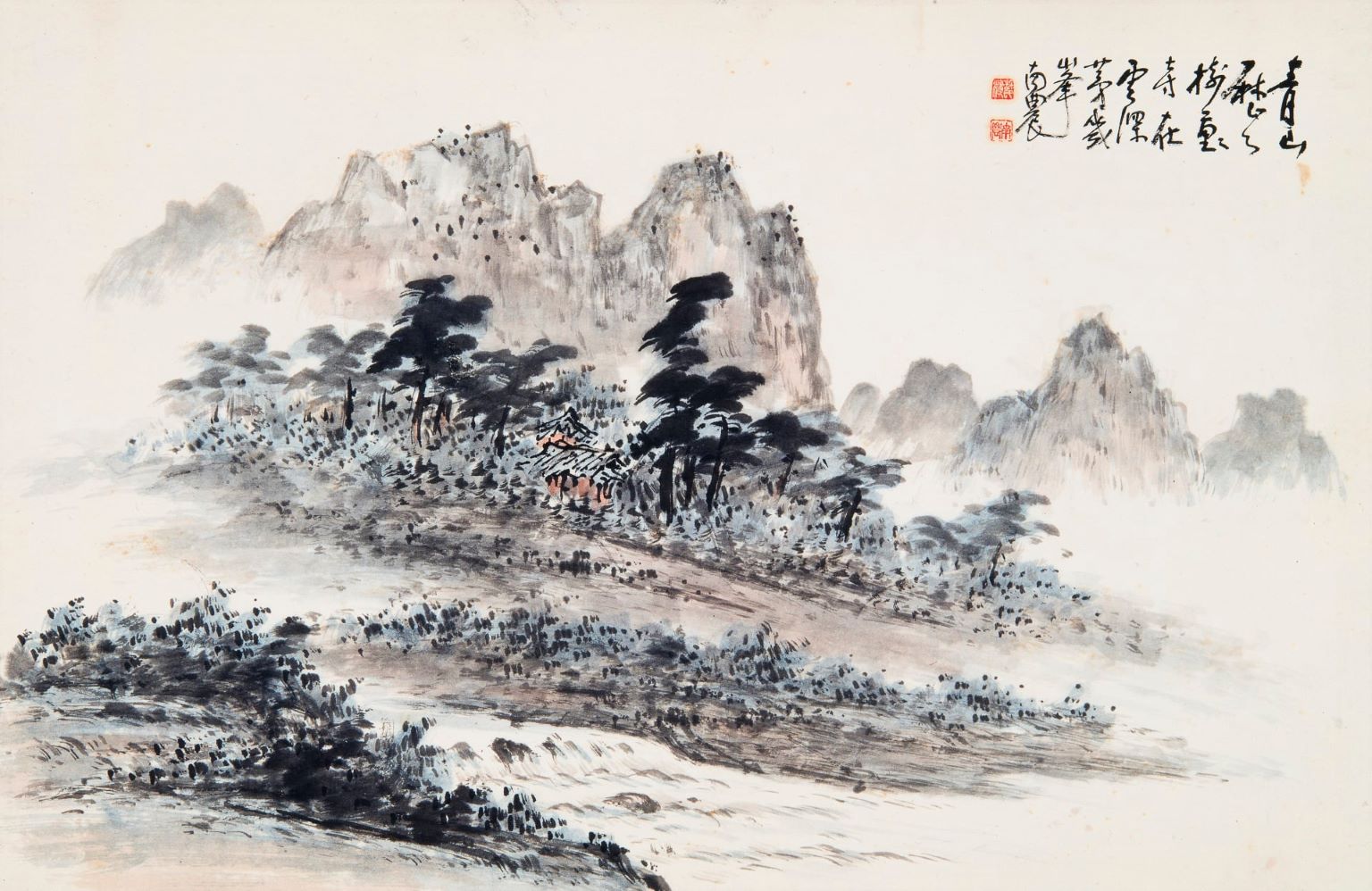
Eastern painting
Eastern painting (dongyanghwa) refers to the overall body of works created using traditional East Asian materials and methods, in contrast to Western painting. In Korea, Byeon Yeongro’s essay “On Eastern Painting” published in Dong-A Ilbo on 7th, July, 1920 was the first use of the term. The term then began to be used in Japan first to distinguish Oriental style paintings from Western ones. Until the late Joseon era, both calligraphy and painting were categorized under the term seohwa, but during the Japanese occupation of Korea in 1922, the first Joseon Art Exhibition [Joseon misul jeollamhoe] divided the painting section into Western and Eastern styles. Thereafter, the term Eastern-style painting entered official use in the country. After independence, the National Art Exhibition (Gukjeon) continued to use the term “Eastern painting,” but since 1970, numerous arguments were made to replace it with "Korean painting," because the term was imposed unilaterally during the Japanese colonial era.
Find More
-

Six Masters of Eastern Painters
The Six Masters were Huh Baeklyun, Kim Eunho, Park Seungmoo, Byeon Gwansik, Lee Sangbeom, and Noh Soohyun, all featured in the Six Eastern Painters Exhibition held by the Seoul Sinmunsa Newspaper Company in December 1971. Of the Ten Masters who were active in the 1940s, these six were the only artists alive at the time of the exhibition.
-
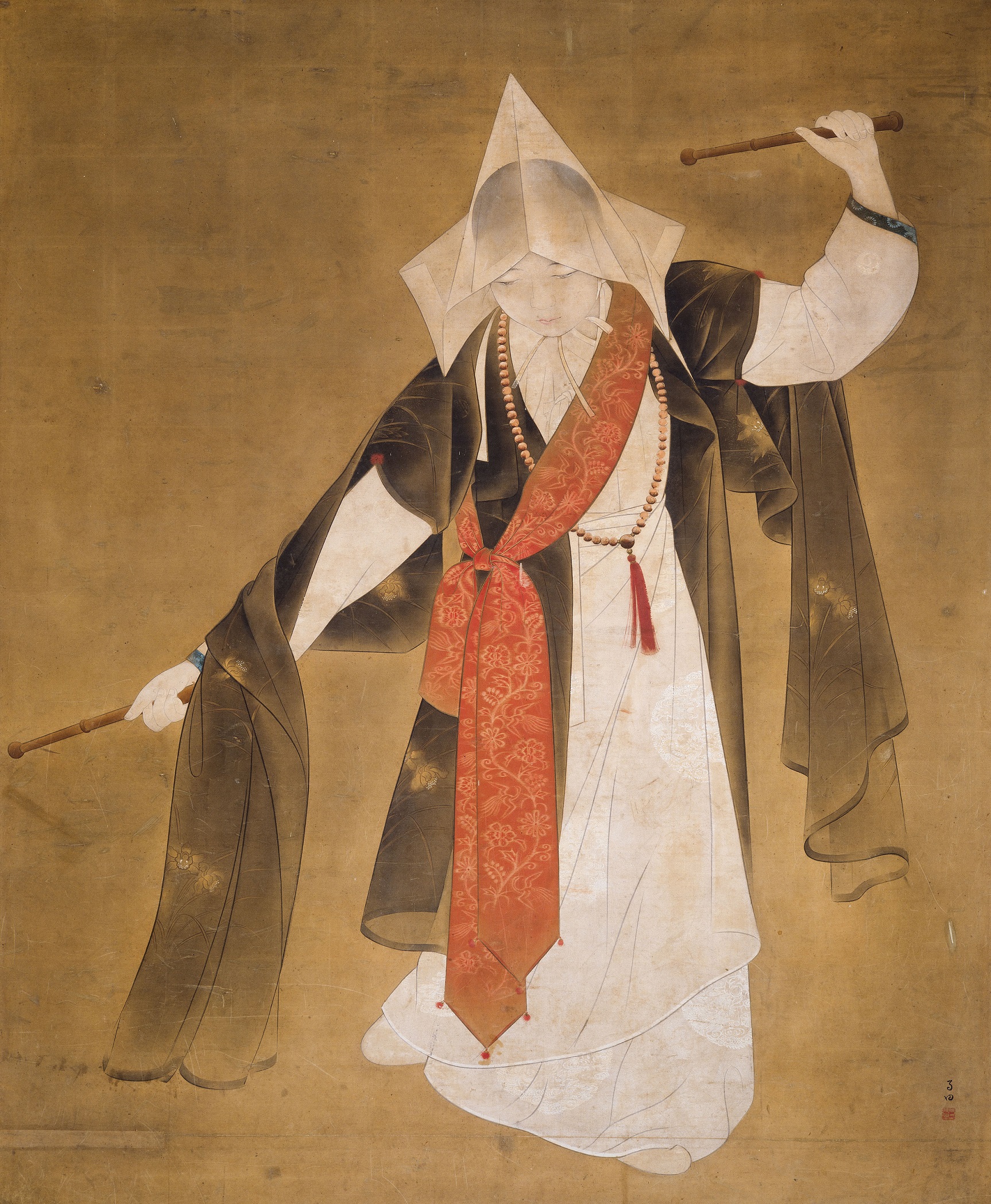
Chang Woosoung
Chang Woosoung (1912-2005, pen name Woljeon) and studied Eastern painting at Kim Eunho's art studio, Nakcheongheon Studio in the 1930s. He joined Husohoe, Kim Eunho’s trainee group, in 1936. He was selected for the Joseon Art Exhibition [Joseon misul jeollamhoe] from 1941 to 1944 and became a Noteworthy Artist. After independence, he worked as a professor of the Department of Oriental painting at Seoul National University from 1946 to 1961 and Hongik University from 1971 to 1974. He served as a judge, Invited Artist, and committee member at the National Art Exhibition (Gukjeon) and was a member of the National Academy of Arts, Republic of Korea. He played a pivotal role in developing the influence of the national academy within modern Korean painting. Prior to independence, his work focused on female figures based on the figurative style of western painting combined with traditional coloring methods. After independence, he tried to develop a mode of modern literati paintings (muninhwa). He emphasized the 'capturing the spirit' of literati painting in terms of succinct description, using simple yet strong ink lines, and light colors in his figure and flower-bird paintings. His work strongly influenced the critical approach to art in late twentieth century Korea.
-
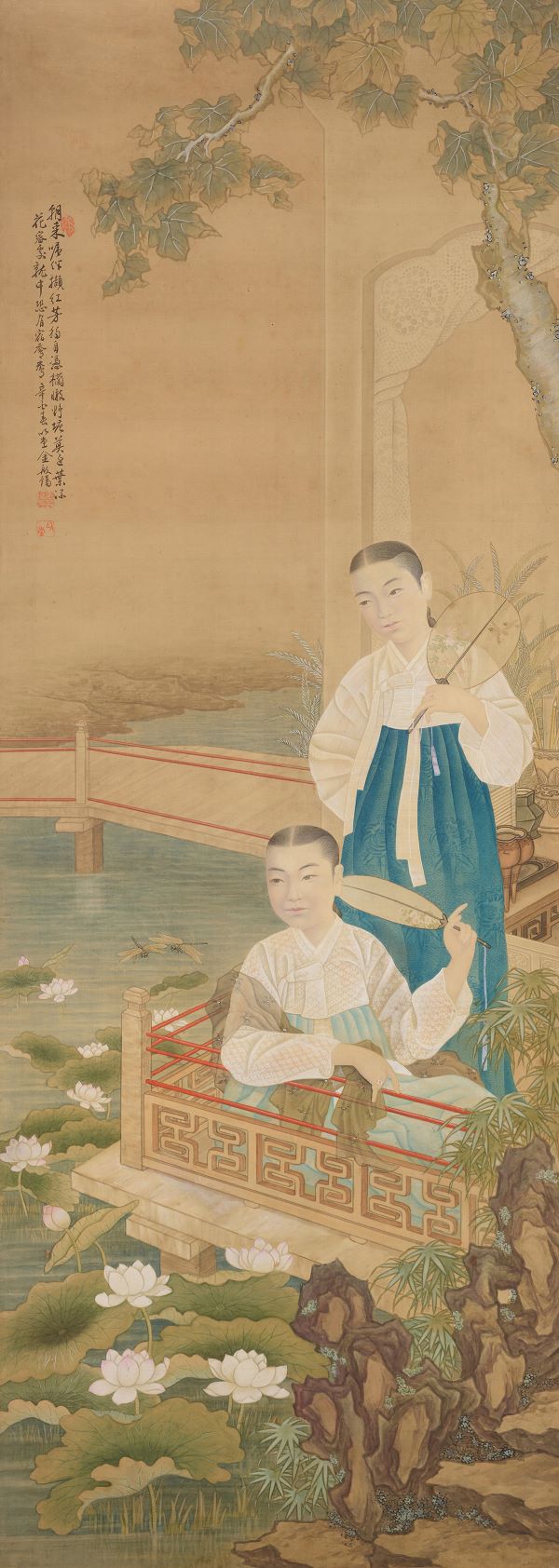
Kim Eunho
Kim Eunho (1892-1979, pen name Yidang) joined the Calligraphy and Painting Society (Seohwa misulhoe) in 1912 and learned Oriental painting under An Jungsik and Cho Seokjin. He was known for his sophisticated brush strokes and attention to detail. Early in his career he was appointed as a court portrait painter. He produced several portraits of kings from the Joseon dynasty and gained a reputation for his portraits and colored figure paintings. He contributed his works to the first exhibition of the Calligraphy and Painting Association (Seohwa hyeophoe) and the Joseon Art Exhibition. His trainees organized Husohoe in 1936, which contributed enormously to the Modern Oriental Art community in Korea. However, he was accused of pro-Japanese activities due to his overt acquiescence to Japanese Imperialism and his involvement in its wartime propaganda. He tried his hand at ink paintings in the 1950s and experimented with modernized colored landscape painting from the 1960s into his later years. In the 1960s, he painted several portraits of historic figures and published Hwadanilgyeong (1968) and Seohwabaeknyeon (1977).






